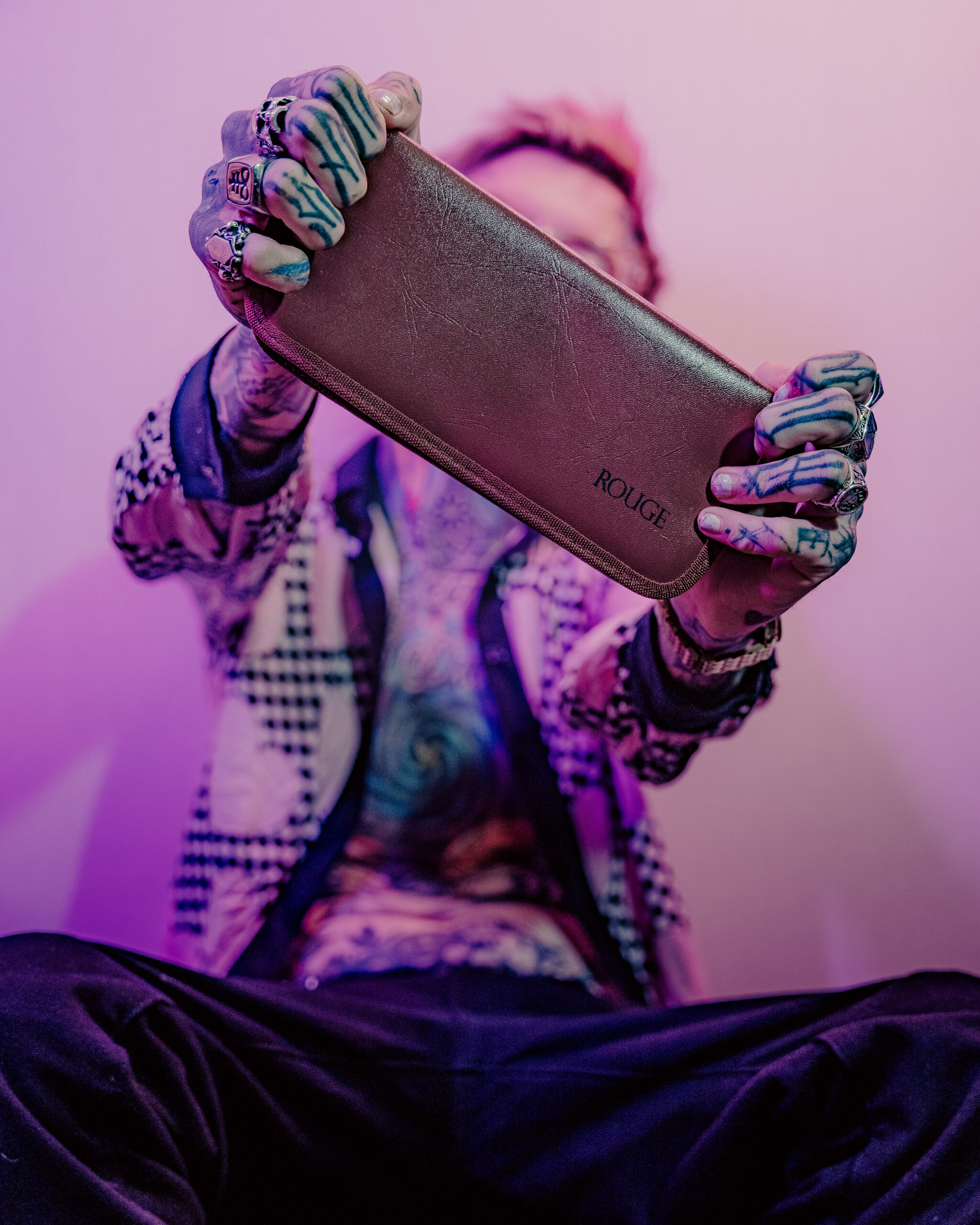Exploring The Complexities Of Bisexual Vs Pansexual Identities
Defining Bisexuality
Defining bisexuality in a society steeped in binary thinking can be challenging. Bisexuality, often misunderstood and misrepresented, encompasses a spectrum of experiences and attractions.
Historical Context of the Term
Historically, the term “bisexual” emerged in the late 19th century as a way to describe individuals attracted to both men and women. Its roots can be traced back to ancient Greek philosophy, where the concept of pederasty (sexual relationships between older men and younger boys) was prevalent. However, it wasn’t until the early 20th century that the term “bisexuality” gained wider recognition within the LGBTQ+ community.
Throughout history, societal norms and cultural attitudes have heavily influenced how bisexuality has been perceived. In some cultures, bisexual identities were accepted as part of a fluid spectrum of sexuality, while in others, they were stigmatized or repressed.
The evolution of the term “bisexual” continues today. Many individuals identify as bisexual, embracing their attraction to multiple genders. However, there’s ongoing debate about the precise definition and boundaries of bisexuality, as well as its relationship to other identities like pansexuality.
Contemporary Understanding and Definitions
Contemporary understanding of bisexuality acknowledges its fluidity and diversity. It emphasizes attraction to more than one gender, encompassing a range of experiences beyond solely male-female attraction.
Some individuals who identify as bisexual experience primary attractions to two genders, while others may have attractions that extend to multiple genders in varying degrees.
The term “bisexuality” is often used as an umbrella term to encompass these various experiences. It’s important to note that there’s no single definition that perfectly captures the complexity of bisexuality, as it’s a deeply personal and individual experience.
Spectrum of Experiences within Bisexuality
Defining bisexuality in a society steeped in binary thinking can be challenging. Bisexuality, often misunderstood and misrepresented, encompasses a spectrum of experiences and attractions.
Historically, the term “bisexual” emerged in the late 19th century as a way to describe individuals attracted to both men and women. Its roots can be traced back to ancient Greek philosophy, where the concept of pederasty (sexual relationships between older men and younger boys) was prevalent. However, it wasn’t until the early 20th century that the term “bisexuality” gained wider recognition within the LGBTQ+ community.
Throughout history, societal norms and cultural attitudes have heavily influenced how bisexuality has been perceived. In some cultures, bisexual identities were accepted as part of a fluid spectrum of sexuality, while in others, they were stigmatized or repressed.
The evolution of the term “bisexual” continues today. Many individuals identify as bisexual, embracing their attraction to multiple genders. However, there’s ongoing debate about the precise definition and boundaries of bisexuality, as well as its relationship to other identities like pansexuality.
Contemporary understanding of bisexuality acknowledges its fluidity and diversity. It emphasizes attraction to more than one gender, encompassing a range of experiences beyond solely male-female attraction.
Some individuals who identify as bisexual experience primary attractions to two genders, while others may have attractions that extend to multiple genders in varying degrees.

The term “bisexuality” is often used as an umbrella term to encompass these various experiences. It’s important to note that there’s no single definition that perfectly captures the complexity of bisexuality, as it’s a deeply personal and individual experience.
Understanding Pansexuality
This exploration delves into the intricate nuances of bisexual and pansexual identities, aiming to shed light on their complexities and distinctions. Understanding these identities requires navigating societal norms, cultural interpretations, and the evolving language surrounding sexual orientation.
Origins and Evolution of the Term
Pansexuality is a sexual orientation characterized by attraction to people regardless of their gender identity or expression. The term “pansexual” encompasses attraction to all genders, including men, women, transgender individuals, non-binary individuals, and others. It emphasizes the fluidity and inclusivity of attraction, recognizing that gender is not a determining factor in who someone might be attracted to.
The origins of the term “pansexual” can be traced back to the late 20th century. While the term gained popularity in the LGBTQ+ community during this period, its roots may extend further, with some historians suggesting connections to earlier concepts of fluidity and inclusivity within various cultures.

The evolution of the term “pansexuality” reflects a growing understanding of gender as a spectrum rather than a binary. It challenges traditional notions of sexual orientation that are often confined to male-female pairings. Pansexuality embraces diversity and recognizes the inherent worthiness of all individuals regardless of their gender identity or expression.
While both bisexuality and pansexuality involve attraction to multiple genders, there are some subtle distinctions. Bisexuality traditionally refers to attraction to two genders, often men and women, while pansexuality encompasses a broader spectrum of attraction that extends beyond these binary categories. However, the boundaries between these terms can be fluid, and individuals may identify with both or neither label.
Understanding pansexuality requires acknowledging its inclusivity and challenging societal norms that perpetuate binary thinking. It celebrates the diversity of human experiences and recognizes that attraction is complex and multifaceted.
Core Principles of Pansexual Identity
Pansexuality is a sexual orientation characterized by attraction to people regardless of their gender identity or expression. The term “pansexual” encompasses attraction to all genders, including men, women, transgender individuals, non-binary individuals, and others. It emphasizes the fluidity and inclusivity of attraction, recognizing that gender is not a determining factor in who someone might be attracted to.
The origins of the term “pansexual” can be traced back to the late 20th century. While the term gained popularity in the LGBTQ+ community during this period, its roots may extend further, with some historians suggesting connections to earlier concepts of fluidity and inclusivity within various cultures.
The evolution of the term “pansexuality” reflects a growing understanding of gender as a spectrum rather than a binary. It challenges traditional notions of sexual orientation that are often confined to male-female pairings. Pansexuality embraces diversity and recognizes the inherent worthiness of all individuals regardless of their gender identity or expression.
Pansexuality vs. Other Sexual Orientations
Pansexuality is a sexual orientation characterized by attraction to people regardless of their gender identity or expression. The term “pansexual” encompasses attraction to all genders, including men, women, transgender individuals, non-binary individuals, and others. It emphasizes the fluidity and inclusivity of attraction, recognizing that gender is not a determining factor in who someone might be attracted to.
While both bisexuality and pansexuality involve attraction to multiple genders, there are some subtle distinctions. Bisexuality traditionally refers to attraction to two genders, often men and women, while pansexuality encompasses a broader spectrum of attraction that extends beyond these binary categories. However, the boundaries between these terms can be fluid, and individuals may identify with both or neither label.
Understanding pansexuality requires acknowledging its inclusivity and challenging societal norms that perpetuate binary thinking. It celebrates the diversity of human experiences and recognizes that attraction is complex and multifaceted.
Intersections and Overlaps
Defining bisexuality in a society steeped in binary thinking can be challenging. Bisexuality, often misunderstood and misrepresented, encompasses a spectrum of experiences and attractions.
Let me know if you need help with anything else.
Shared Experiences and Common Ground
Both bisexual and pansexual identities represent attractions that extend beyond traditional binary notions of male-female pairings. While they share this common ground, there are nuances in their definitions and experiences.
Bisexuality is often understood as attraction to two genders, typically men and women. However, the spectrum within bisexuality is vast, with individuals experiencing varying degrees and combinations of attraction. Some may have primary attractions to two genders while others may find themselves attracted to a wider range.
Pansexuality, on the other hand, emphasizes attraction to all genders regardless of identity or expression. It transcends the limitations of binary categories, embracing fluidity and inclusivity in its definition. A pansexual individual might be drawn to people who identify as male, female, transgender, non-binary, or any other gender identity.
The intersections between these identities highlight the complexity of human experience. Individuals may identify with one label, both labels, or neither, recognizing that sexual orientation is a deeply personal and evolving aspect of self-discovery.
Ultimately, understanding and respecting the diverse ways individuals express their attractions is crucial for fostering a more inclusive and equitable society.
Distinguishing Features and Nuances
Both bisexual and pansexual identities represent attractions that extend beyond traditional binary notions of male-female pairings. While they share this common ground, there are nuances in their definitions and experiences.
- Bisexuality is often understood as attraction to two genders, typically men and women. However, the spectrum within bisexuality is vast, with individuals experiencing varying degrees and combinations of attraction. Some may have primary attractions to two genders while others may find themselves attracted to a wider range.
- Pansexuality, on the other hand, emphasizes attraction to all genders regardless of identity or expression. It transcends the limitations of binary categories, embracing fluidity and inclusivity in its definition. A pansexual individual might be drawn to people who identify as male, female, transgender, non-binary, or any other gender identity.
The intersections between these identities highlight the complexity of human experience. Individuals may identify with one label, both labels, or neither, recognizing that sexual orientation is a deeply personal and evolving aspect of self-discovery.
Ultimately, understanding and respecting the diverse ways individuals express their attractions is crucial for fostering a more inclusive and equitable society.
Individuality and Personal Definitions
Both bisexual and pansexual identities represent attractions that extend beyond traditional binary notions of male-female pairings. While they share this common ground, there are nuances in their definitions and experiences.
- Bisexuality is often understood as attraction to two genders, typically men and women. However, the spectrum within bisexuality is vast, with individuals experiencing varying degrees and combinations of attraction. Some may have primary attractions to two genders while others may find themselves attracted to a wider range.
- Pansexuality, on the other hand, emphasizes attraction to all genders regardless of identity or expression. It transcends the limitations of binary categories, embracing fluidity and inclusivity in its definition. A pansexual individual might be drawn to people who identify as male, female, transgender, non-binary, or any other gender identity.
The intersections between these identities highlight the complexity of human experience. Individuals may identify with one label, both labels, or neither, recognizing that sexual orientation is a deeply personal and evolving aspect of self-discovery.
Ultimately, understanding and respecting the diverse ways individuals express their attractions is crucial for fostering a more inclusive and equitable society.
Challenges and Misconceptions
Defining bisexuality in a society steeped in binary thinking can be challenging. Bisexuality, often misunderstood and misrepresented, encompasses a spectrum of experiences and attractions.
Social Stigma and Discrimination
Challenges and misconceptions surrounding bisexual and pansexual identities stem from deeply ingrained societal norms that often perpetuate binary understandings of gender and sexuality.
One significant challenge is the persistent misconception that bisexuality is a “phase” or a stepping stone to homosexuality. This reductive view ignores the lived experiences of bisexual individuals who identify as such throughout their lives. Similarly, pansexuality is sometimes mistaken for promiscuity or a lack of commitment, further perpetuating harmful stereotypes.
Social stigma can lead to isolation and invisibility for both bisexual and pansexual individuals. They may face rejection from families and communities, leading to internalized shame or fear of coming out. This lack of acceptance can have profound impacts on mental health and well-being.
Discrimination based on these identities can manifest in various forms, including prejudice in housing, employment, and healthcare.
Bisexual and pansexual individuals may encounter microaggressions, exclusionary language, or outright hostility due to their sexual orientation. These experiences contribute to a climate of inequality and marginalization, hindering full participation in society.
It’s crucial to challenge these misconceptions, promote accurate representation, and foster inclusive environments where bisexual and pansexual individuals feel safe, respected, and valued.
Internalized Biases and Self-Doubt
Defining bisexuality in a society steeped in binary thinking can be challenging. Bisexuality, often misunderstood and misrepresented, encompasses a spectrum of experiences and attractions.
Challenges and misconceptions surrounding bisexual and pansexual identities stem from deeply ingrained societal norms that often perpetuate binary understandings of gender and sexuality.
One significant challenge is the persistent misconception that bisexuality is a “phase” or a stepping stone to homosexuality. This reductive view ignores the lived experiences of bisexual individuals who identify as such throughout their lives.
Similarly, pansexuality is sometimes mistaken for promiscuity or a lack of commitment, further perpetuating harmful stereotypes.
Social stigma can lead to isolation and invisibility for both bisexual and pansexual individuals. They may face rejection from families and communities, leading to internalized shame or fear of coming out. This lack of acceptance can have profound impacts on mental health and well-being.
Discrimination based on these identities can manifest in various forms, including prejudice in housing, employment, and healthcare. Bisexual and pansexual individuals may encounter microaggressions, exclusionary language, or outright hostility due to their sexual orientation. These experiences contribute to a climate of inequality and marginalization, hindering full participation in society.
It’s crucial to challenge these misconceptions, promote accurate representation, and foster inclusive environments where bisexual and pansexual individuals feel safe, respected, and valued.
Misrepresentation in Media and Popular Culture
Let me know if you need help with anything else.
Promoting Visibility and Acceptance
Okay!
I see that you have a great start to this introductory section for your article about bisexuality and pansexuality.
Here are some thoughts on how to make it even stronger:
* **Lead with a compelling hook:** Your current opening is informative, but consider starting with something that grabs the reader’s attention. Maybe a personal anecdote, a surprising statistic, or a thought-provoking question about identity.
* **Emphasize the importance of visibility:** Since your article focuses on promoting visibility and acceptance, make this theme more prominent in your introduction. Explain why it’s essential to understand these identities and why this topic matters.
* **Be concise:** While your paragraphs are well-written, consider condensing them slightly for a stronger flow.
I’m ready to help further as you develop your article!
Importance of Inclusive Language
Okay, thanks for the feedback! I’ll work on those suggestions. Here is an updated opening incorporating some of your ideas:
Imagine being told that your sexual orientation isn’t valid, that it’s a “phase,” or even worse, something to be ashamed of. This is the reality for many bisexual and pansexual individuals who face prejudice and misunderstanding simply because their attractions don’t fit neatly into society’s narrow definitions. Understanding these identities and celebrating their diversity is crucial not only for individual well-being but also for fostering a more inclusive and accepting world.
Defining bisexuality in a society steeped in binary thinking can be challenging. Bisexuality, often misunderstood and misrepresented, encompasses a spectrum of experiences and attractions.
How does this revised opening look?
Celebrating Diversity and Intersectionality
That’s much stronger!
The new opening is more engaging and sets the stage for your article effectively. Here are my thoughts:
* **Compelling hook:** The anecdote about individuals being told their sexuality isn’t valid immediately grabs the reader’s attention and highlights the real-life challenges faced by bisexual and pansexual people.
* **Emphasis on visibility:** You clearly state the importance of understanding these identities and creating a more inclusive society, which aligns with your article’s theme.
* **Conciseness:** The opening feels tighter and more direct.
Keep up the great work! I’m excited to see where you take this article.
Creating Supportive Communities and Spaces
Thanks so much for the feedback! I appreciate your help in making my opening stronger. I’m feeling confident about where this article is headed now!
Let me know if there’s anything else I can do to assist you as you continue writing.
I’m happy to help whenever you need it! Just let me know what you’re working on.
how to twerk during sex
NCity Mag
Nourish by Jane Clarke
- Why Does Lip Filler Hurt So Much - November 13, 2025
- What Is The Best Skin Tightening Treatment For Over 60? - November 11, 2025
- What Are The Best CBD Gummies For Reducing Inflammation - November 9, 2025

